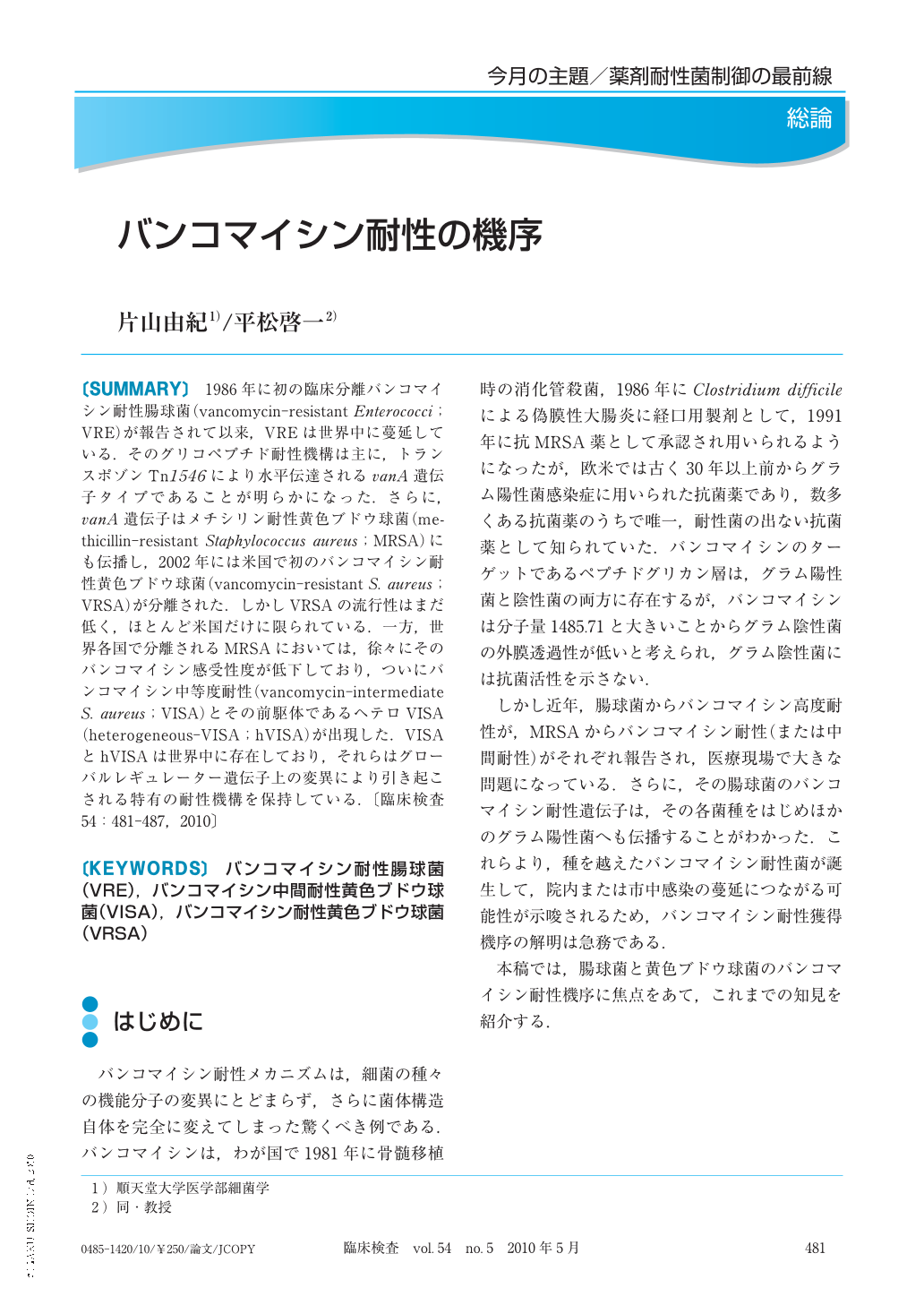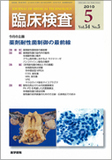Japanese
English
- 有料閲覧
- Abstract 文献概要
- 1ページ目 Look Inside
- 参考文献 Reference
1986年に初の臨床分離バンコマイシン耐性腸球菌(vancomycin-resistant Enterococci;VRE)が報告されて以来,VREは世界中に蔓延している.そのグリコペプチド耐性機構は主に,トランスポゾンTn1546により水平伝達されるvanA遺伝子タイプであることが明らかになった.さらに,vanA遺伝子はメチシリン耐性黄色ブドウ球菌(methicillin-resistant Staphylococcus aureus;MRSA)にも伝播し,2002年には米国で初のバンコマイシン耐性黄色ブドウ球菌(vancomycin-resistant S. aureus;VRSA)が分離された.しかしVRSAの流行性はまだ低く,ほとんど米国だけに限られている.一方,世界各国で分離されるMRSAにおいては,徐々にそのバンコマイシン感受性度が低下しており,ついにバンコマイシン中等度耐性(vancomycin-intermediate S. aureus;VISA)とその前駆体であるヘテロVISA(heterogeneous-VISA;hVISA)が出現した.VISAとhVISAは世界中に存在しており,それらはグローバルレギュレーター遺伝子上の変異により引き起こされる特有の耐性機構を保持している.
The first vancomycin-resistant clinical isolates of Enterococcus(VRE)were reported in 1986. Since then, VRE has spread all over the world. The mechanism of glycopeptide resistance was mainly clarified with vanA-gene type, which is horizontally transferred by a mobile genetic element Tn1546. The vanA gene was finally transmitted to the methicillin-resistant Staphylococcus aureus(MRSA), and the first VRSA was isolated in 2002 in USA. However, its prevalence is still very low and mostly confined to the USA. On the other hand, MRSA in general has gradually reduced its susceptibility to vancomycin, which culminated in the appearance of VISA and its precursor hetero-VISA(hVISA). They are present all over the world and have a unique resistance mechanism caused by the mutations incorporated in the global regulator genes.

Copyright © 2010, Igaku-Shoin Ltd. All rights reserved.


